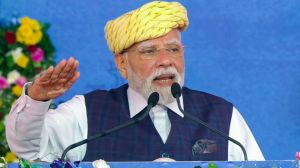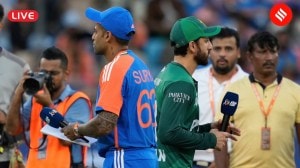Amartya Sen, Marai Chatterjee make waves at White House
WASHINGTON, APRIL 6: Nobel laureate Amartya Sen and Self-Employed Women's Association (SEWA) president Marai Chatterjee were among the sta...

WASHINGTON, APRIL 6: Nobel laureate Amartya Sen and Self-Employed Women’s Association (SEWA) president Marai Chatterjee were among the star speakers who made a powerful impression at a White House conference on the "new economy" and how to use modern tools like the internet to narrow economic gaps within societies and between countries.
Clinton, who brought together some of the world’s top economists, ministers, think tanks and leaders of the new economy like Bill Gates of Microsoft, for the conference yesterday, spoke of the deep impression made on him by the advent of the internet in a milk cooperative at Rajasthan’s Nayala village and in Hyderabad.
Sen and Chatterjee were challenged by Clinton to say what they would do if they were suddenly to obtain two or three billion dollars, and they both emphasized education, health and empowerment of the poorest.
"We live in a world of many interactive institutions – the market, the government, the democratic process, the media, the non-governmental organisations, the research institutions, public and private and so on.
"Each of them can play a major but complementary role in enhancing the well-being and freedom of the indidivuals in the society and the world at large. The closing or even narrowing of the global divide requires an understanding and informed view of this institutional complementarity," Sen said.
"No famine has ever occurred in a democratic society. They all happen only in colonial regimes or in military dictatorships, or in one-party states like the Soviet Union in the 1930s or in China in the early 1960s, in Cambodia in the 1970s or in North Korea right now," Sen said.
Chatterjee pointed out that she represented a quarter of a million very poor women workers who were earning definitely less than one dollar a day, the international standard for the very poor, and closer to 40 cents a day.
"What SEWA has learnt is that work and employment are central to poor women. Ninety-three per cent of the Indian workforce is in the informal sector.
"They are vulnerable workers, they have no protection and no labour legislation. They are the poorest. Yet it is a vibrant, dynamic, growing sector which accounts for 63 per cent of the gross domestic product," she said.
To Clinton’s question what they would do if they suddenly got two or three billion dollars, Dr Sen replied, "In a very tiny way, I used my Nobel money to start up on an educational foundation especially for girls but mainly for rural children."
"One thing we would definitely do with that money is to try and help use that as a revolving fund to help women develop their small businesses and their employment; also promote capitalisation; also encourage them to get some sort of social protection, some sort of social security," Chatterjee said.
Photos



- 01
- 02
- 03
- 04
- 05




























